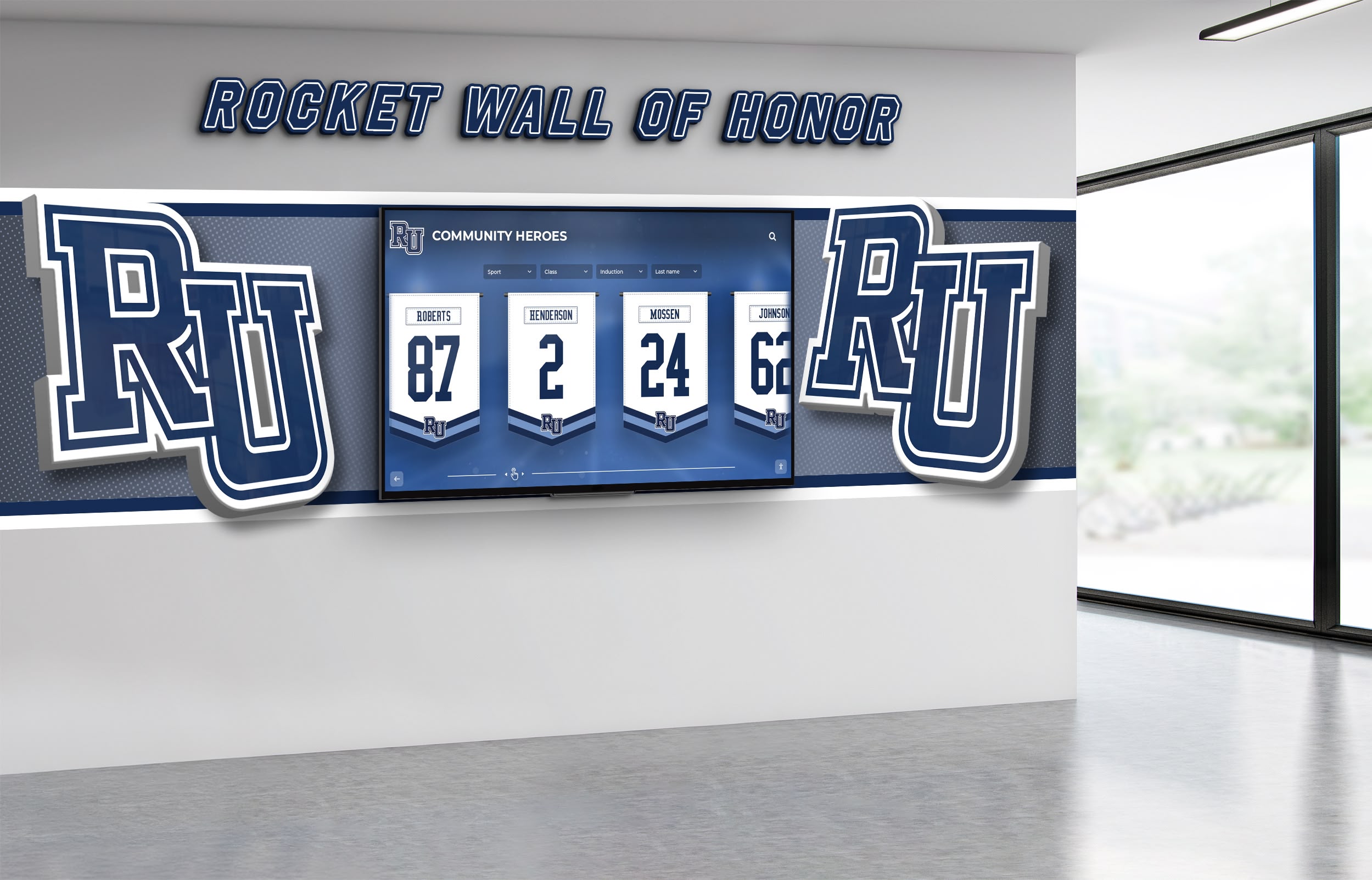Every student deserves clear pathways connecting high school education to meaningful careers and fulfilling futures. Yet many schools struggle to provide comprehensive career guidance that helps students understand available options, educational requirements for different career paths, connections between current coursework and future opportunities, and concrete steps toward achieving professional goals. Traditional career counseling approaches often prove inadequate—guidance counselors face overwhelming caseloads limiting individual attention, printed career materials quickly become outdated, static bulletin boards generate minimal student engagement, and career exploration happens sporadically rather than as ongoing process throughout students’ educational journeys.
The disconnect between education and career preparation creates serious consequences. Students graduate without clear direction or understanding of available opportunities. Talented individuals pursue paths misaligned with their interests and strengths simply due to lack of awareness about alternatives. Educational systems fail to adequately prepare students for workforce demands and economic realities they will navigate. Communities experience talent drain as young people leave without recognizing local career opportunities worth staying for.
Interactive career pathways boards address these challenges through engaging digital displays that bring career exploration to life in ways traditional approaches cannot match. These solutions provide comprehensive career information accessible to all students, interactive exploration experiences that engage digital-native learners, continuously updated content reflecting current career landscapes, personalized planning tools supporting individual student journeys, and efficient resource management that amplifies guidance counselor effectiveness enabling support for more students with existing staff resources.
Understanding Career Pathways and Why Digital Solutions Matter
Before examining specific implementation strategies, it’s essential to understand what career pathways represent and why interactive digital approaches create advantages over traditional career guidance methods that schools have relied on for decades.
What Career Pathways Actually Mean in Educational Contexts
Career pathways represent structured frameworks connecting academic preparation to professional careers through clear sequences of educational experiences, skill development, and credential attainment that prepare students for specific career fields or industry sectors.
Essential Career Pathway Components:
Comprehensive career pathways include multiple interconnected elements working together to guide student planning and preparation. Foundational academic coursework provides core knowledge and skills applicable across career options. Career and technical education programs offer specialized training in specific fields developing practical skills employers value. Work-based learning experiences including internships, apprenticeships, job shadowing, and cooperative education connect classroom learning to real workplace contexts. Industry-recognized credentials and certifications demonstrate competency to employers and provide tangible milestones marking progress. Post-secondary education planning ensures students understand college options, training programs, and educational requirements for careers of interest.
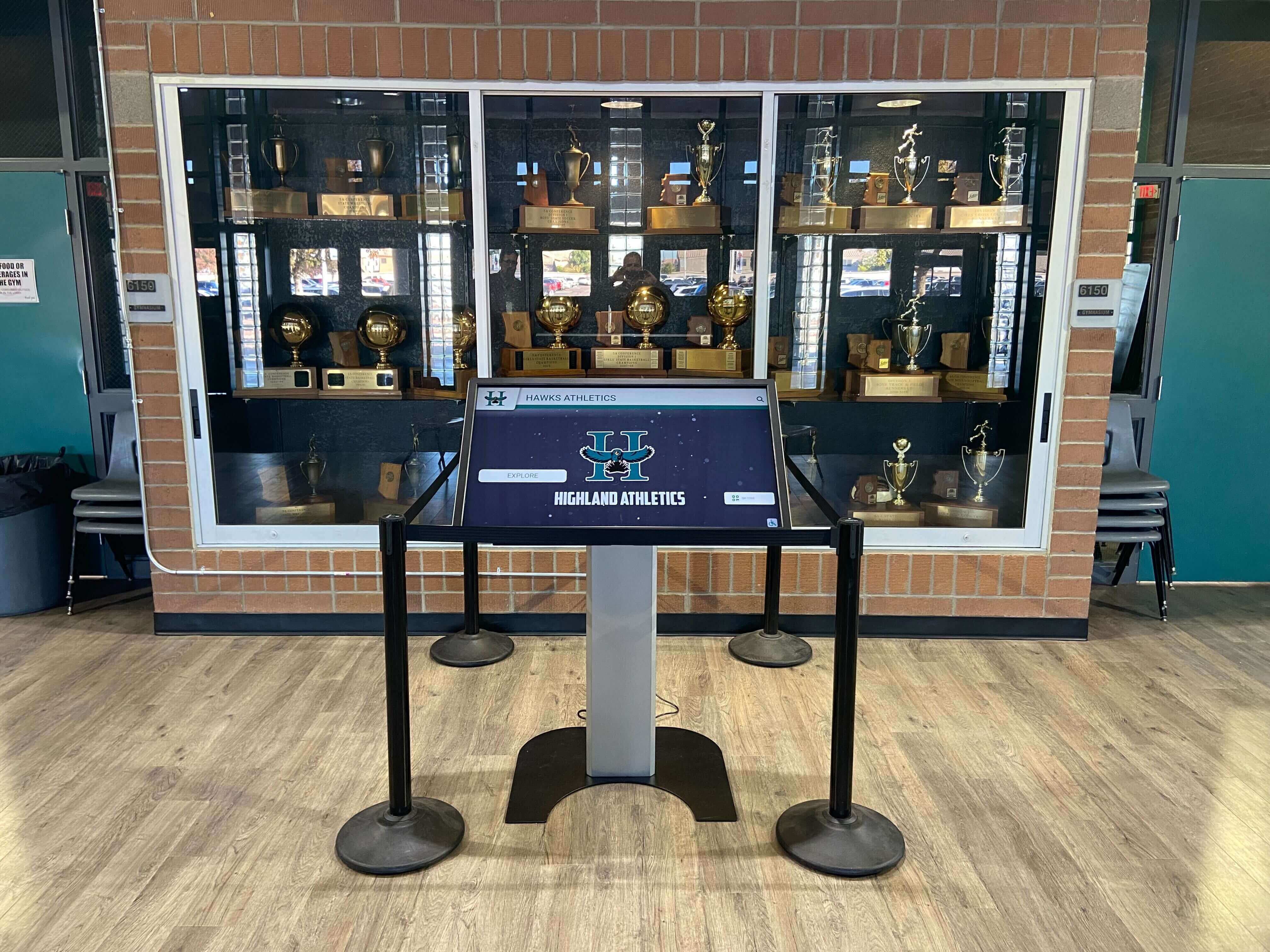
Career pathways also emphasize academic and career advising that helps students make informed decisions aligned with their interests, aptitudes, and goals. Effective pathways provide multiple entry points and exit points accommodating students with different starting positions and evolving interests. Flexibility allows pathways to adapt as students develop greater self-knowledge and career understanding throughout their educational experiences.
Major Career Pathway Categories:
Most comprehensive frameworks organize careers into broad clusters representing related occupations sharing common knowledge and skill requirements. Common pathway categories include Health Science careers ranging from nursing and medical technology to public health and healthcare administration. Business Management and Administration pathways preparing students for careers in business operations, marketing, human resources, and entrepreneurship. Engineering and Manufacturing paths leading to careers in mechanical, electrical, civil engineering, and advanced manufacturing. Information Technology careers spanning software development, cybersecurity, network administration, and data analytics. Education and Training pathways preparing future teachers, trainers, and educational support professionals. Arts, Audio/Video Technology and Communications careers in creative fields including graphic design, film production, journalism, and performing arts.
Additional pathways commonly include Agriculture, Food, and Natural Resources; Architecture and Construction; Finance; Government and Public Administration; Hospitality and Tourism; Human Services; Law, Public Safety, Corrections, and Security; Marketing; Science, Technology, Engineering, and Mathematics (STEM); and Transportation, Distribution, and Logistics. Comprehensive systems ensure all students can identify pathways aligned with their interests and strengths rather than forcing narrow options.
Why Traditional Career Guidance Falls Short
Despite best efforts by dedicated guidance counselors and career advisors, traditional approaches struggle to meet contemporary student career exploration needs due to structural limitations and resource constraints.
Fundamental Challenges:
Overwhelming Counselor Caseloads: According to the American School Counselor Association, the recommended student-to-counselor ratio stands at 250:1, yet many schools operate with ratios exceeding 400:1 or 500:1. These caseloads make individualized career counseling nearly impossible for all students, forcing counselors to focus on crisis intervention and basic scheduling rather than proactive career development. Many students receive minimal career guidance beyond brief college application support during junior and senior years.
Limited Accessibility and Reach: Traditional career counseling occurs during scheduled appointments in counselor offices, creating access barriers. Students with scheduling conflicts, transportation challenges, or reluctance to seek help may never engage with available resources. Career information remains largely invisible unless students proactively seek it out, missing opportunities to spark interest through casual discovery and exploration.
Static and Outdated Information: Printed career materials, posters, and bulletin boards quickly become outdated as career landscapes evolve. New occupations emerge, skill requirements shift, salary data changes, and educational pathways develop—but static materials don’t reflect these dynamics. Students may plan based on obsolete information that misrepresents current realities.
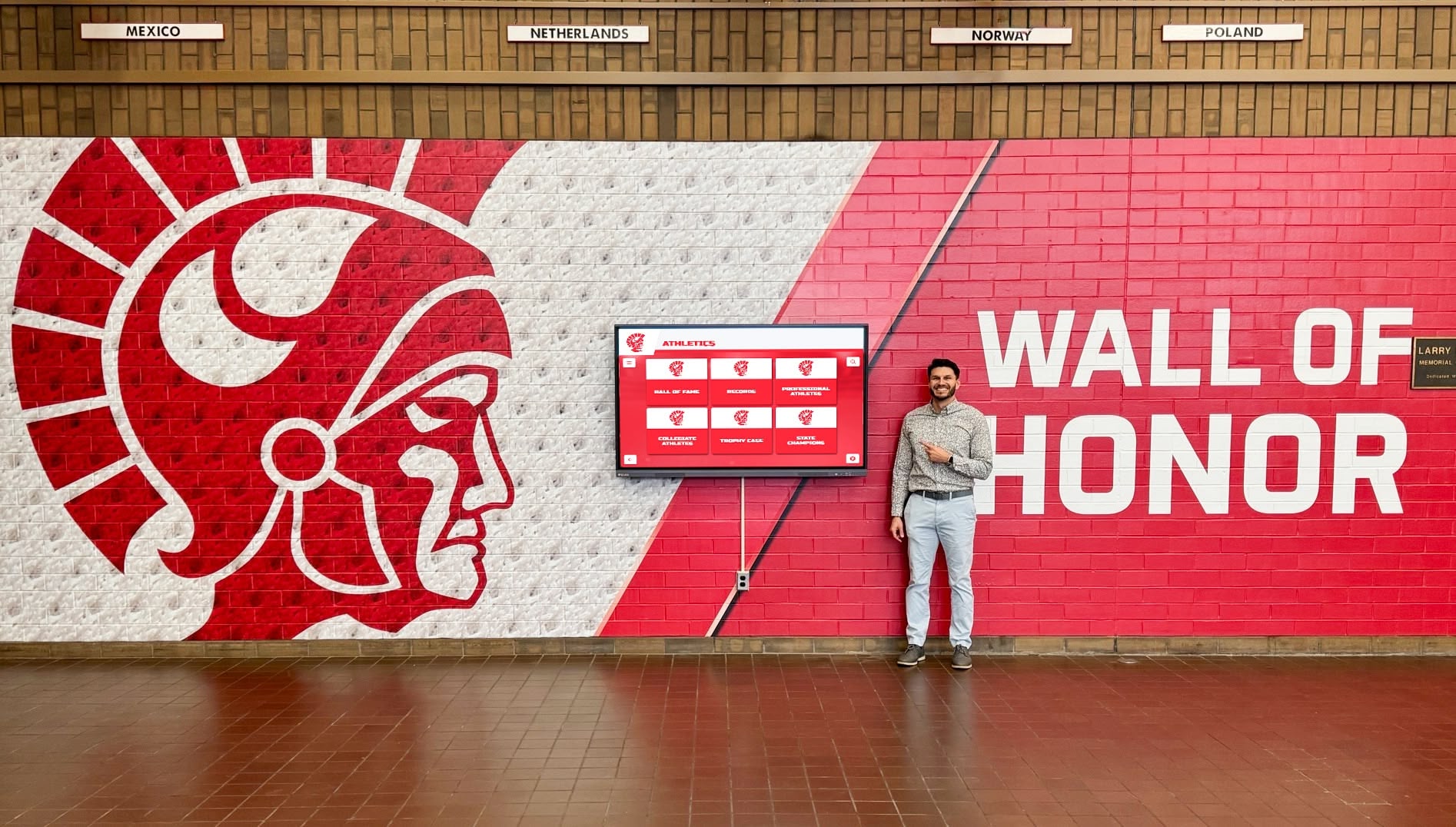
Limited Engagement and Discoverability: Passive resources like career libraries and bulletin boards generate minimal engagement from contemporary students accustomed to interactive digital experiences. Without engaging presentation formats, career information fails to capture student attention even when valuable content exists. Students simply don’t discover resources that could inform their planning.
Insufficient Connection to Academic Experience: Career guidance often exists separately from daily academic experience rather than being integrated into ongoing education. Students struggle to understand how current coursework connects to future careers, reducing motivation and missing opportunities to make informed course selection decisions that support career interests.
How Interactive Digital Solutions Transform Career Guidance
Interactive career pathways boards address traditional limitations while introducing capabilities that fundamentally improve how students explore careers and plan futures.
Digital Advantages:
24/7 Accessibility: Digital displays in high-traffic school areas provide constant career information access without requiring scheduled appointments. Students can explore whenever convenient—before school, during lunch, between classes, or after activities. Casual browsing lowers barriers encouraging spontaneous exploration that scheduled counseling appointments may inhibit.
Engaging Interactive Experiences: Touchscreen interfaces enable active exploration rather than passive reading. Students can navigate through career options, watch video content, take interest inventories, explore educational requirements, and personalize information based on their situations. Interactive engagement holds attention longer while making career exploration feel less like obligation and more like interesting discovery.
Dynamic Content That Stays Current: Digital platforms enable simple content updates reflecting evolving career landscapes. New careers can be added, skill requirements updated, salary data refreshed, and educational pathways modified through cloud-based management systems without printing costs or installation delays. Currency ensures students plan based on accurate current information rather than outdated assumptions.
Multimedia Content Bringing Careers to Life: Digital displays can incorporate videos showing professionals in various careers, virtual workplace tours, day-in-the-life profiles, and alumni testimonials from graduates working in different fields. Rich multimedia content helps students visualize what different careers actually involve in ways that text descriptions cannot match. Solutions like Rocket Alumni Solutions provide purpose-built platforms designed specifically for educational institutions, making implementation straightforward for schools without extensive technical expertise.
Personalized Exploration Pathways: Interactive systems can adapt content based on student responses to interest surveys, academic performance, and expressed goals. Personalization helps students quickly identify most relevant options rather than overwhelming them with hundreds of careers bearing no connection to their interests or strengths.
Integration with Academic Planning: Digital career systems can connect with course catalogs, showing how specific classes support different career pathways. This integration helps students make informed course selection decisions understanding how electives, advanced courses, or specialized programs relate to career goals. Understanding effective strategies for building school pride helps schools create comprehensive development programs addressing both recognition and future planning.
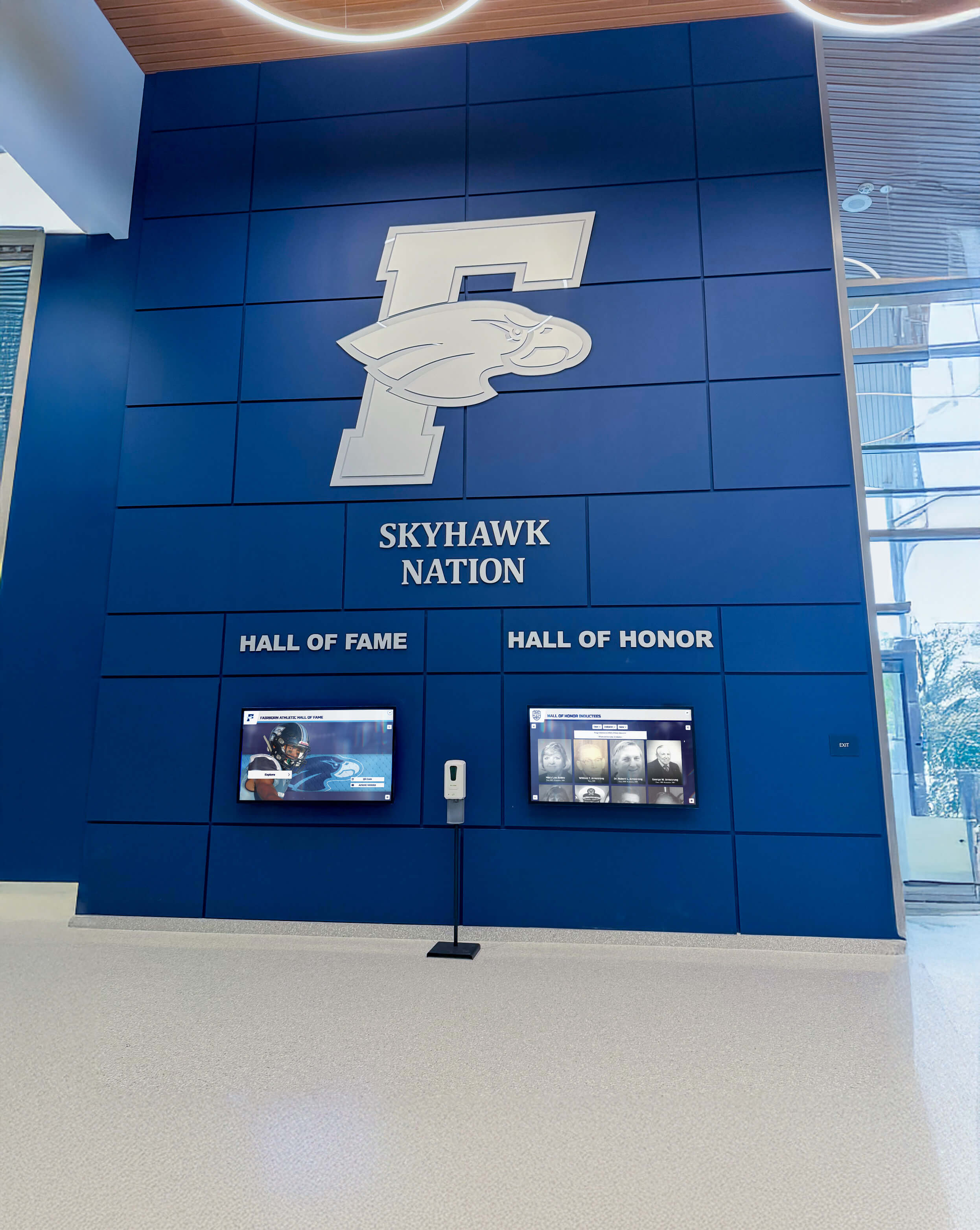
Data and Analytics: Digital systems track usage patterns revealing which careers students explore most, what questions generate most interest, and where students struggle in their planning. Analytics inform continuous improvement while helping counselors identify trends and gaps requiring attention.
Essential Components of Effective Career Pathways Boards
Creating interactive career pathways boards that genuinely support student development requires thoughtful design incorporating multiple complementary elements working together to guide exploration and planning.
Comprehensive Career Information Database
The foundation of effective career pathways boards is comprehensive information covering diverse careers with sufficient depth to support informed decision-making.
Core Information Elements:
Career Descriptions and Responsibilities: Clear explanations of what professionals in different careers actually do day-to-day, including typical responsibilities, work environments, and key activities. Descriptions should be specific enough that students understand what the work involves while remaining accessible to teenagers without prior knowledge of professional work contexts.
Educational Requirements and Pathways: Detailed information about educational prerequisites including high school course recommendations, post-secondary degree or certification requirements, typical college majors, specialized training programs, and alternative pathways for entering careers. Students need to understand not just that careers require education but specifically what education and in what sequence.
Skill Requirements: Documentation of technical skills, soft skills, and competencies needed for success in different careers. Skill information helps students assess fit while identifying areas for development. Connections between required skills and high school opportunities to develop those skills make information actionable rather than simply descriptive.
Salary and Compensation Data: Realistic salary information including typical entry-level compensation, mid-career earnings, and top-level potential. Salary data helps students understand economic realities while making informed decisions about educational investments required for different career paths. Information should acknowledge geographic variations and cost of living considerations.
Job Outlook and Demand Projections: Labor market information about career growth projections, employment demand trends, and job availability. Outlook data from sources like the U.S. Bureau of Labor Statistics helps students understand which careers offer strong employment prospects versus fields with declining opportunities or intense competition.
Career Advancement Opportunities: Information about typical career progression paths, advancement timelines, and professional development opportunities within different fields. Understanding growth potential helps students evaluate long-term career viability beyond entry-level positions.
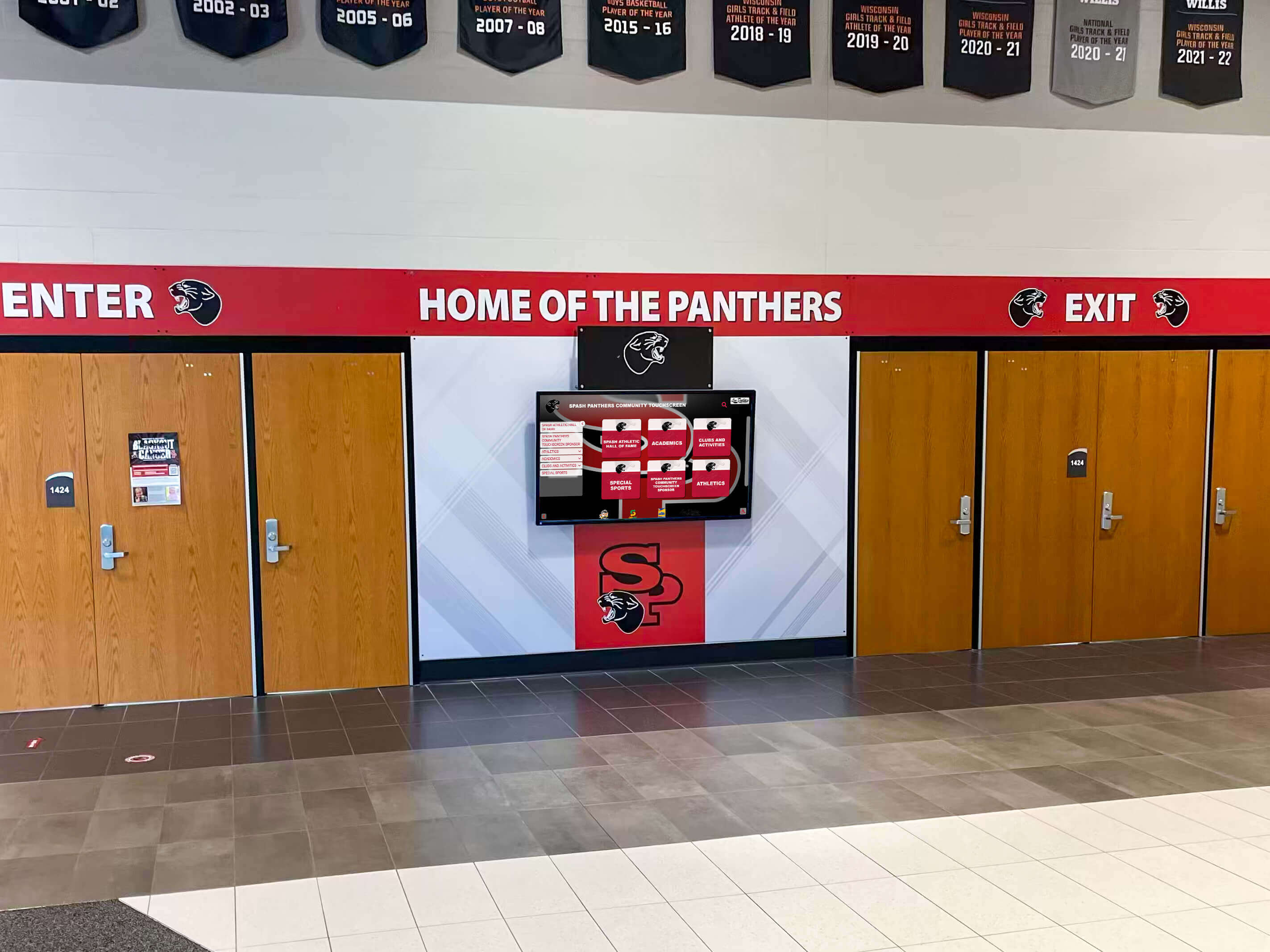
Interactive Exploration and Assessment Tools
Beyond static information, effective career pathways boards incorporate interactive tools that actively engage students in self-discovery and exploration processes.
Interactive Tool Categories:
Interest Inventories and Assessments: Digital versions of validated interest assessments like Holland Code (RIASEC) inventories that help students identify careers aligning with their personality types, interests, and preferences. Assessments should provide immediate results with direct connections to specific career recommendations worth exploring based on student responses.
Skills Assessments: Tools helping students identify current strengths and areas for development. Skills assessments might evaluate academic strengths, technical abilities, creative capacities, interpersonal skills, and other competencies relevant to career success. Results should connect to careers that leverage identified strengths while highlighting development opportunities.
Values Clarification Exercises: Interactive activities helping students identify what they value in careers—factors like work-life balance, helping others, creativity, financial security, prestige, independence, or social contribution. Values clarification ensures students consider what will make them satisfied professionally rather than pursuing careers based solely on external factors like prestige or parental expectations.
Career Comparison Tools: Features allowing students to compare multiple careers side-by-side examining factors like educational requirements, salary ranges, work environments, and daily responsibilities. Comparison functionality helps students evaluate trade-offs between different options they’re considering.
Educational Planning Tools: Interactive features helping students map educational pathways from their current position through post-secondary completion for careers of interest. Planning tools might show recommended high school courses, summer opportunities, extracurricular activities, college programs, and timeline projections for credential attainment.
Job Shadowing and Internship Connections: Direct links connecting students to work-based learning opportunities including job shadowing programs, internships, apprenticeships, and volunteer positions related to careers they’re exploring. Connecting exploration to real-world exposure makes career pathways tangible rather than abstract. Exploring comprehensive school culture strategies helps schools create holistic development programs incorporating career readiness alongside academic achievement.
Multimedia Content and Real-World Connections
Text-based information alone rarely captures student imagination or communicates what careers actually involve. Multimedia content brings career pathways to life through authentic voices and visual experiences.
Multimedia Content Types:
Professional Video Profiles: Video interviews with professionals working in various careers discussing their paths, what they love about their work, challenges they face, typical days, and advice for students interested in their fields. Authentic voices from real professionals resonate more powerfully than written descriptions while helping students visualize themselves in different roles.
Workplace Virtual Tours: Video or virtual reality experiences showing actual work environments including offices, laboratories, construction sites, hospitals, manufacturing facilities, creative studios, and other workplaces. Visual workplace exposure helps students understand career contexts while making abstract careers more concrete.
Alumni Success Stories: Profiles of school alumni working in various careers showing pathways from high school through current professional positions. Alumni connections prove particularly powerful demonstrating that the career pathways board describes are achievable for students from this specific school and community. Understanding effective alumni recognition approaches helps schools maintain networks supporting current student development.
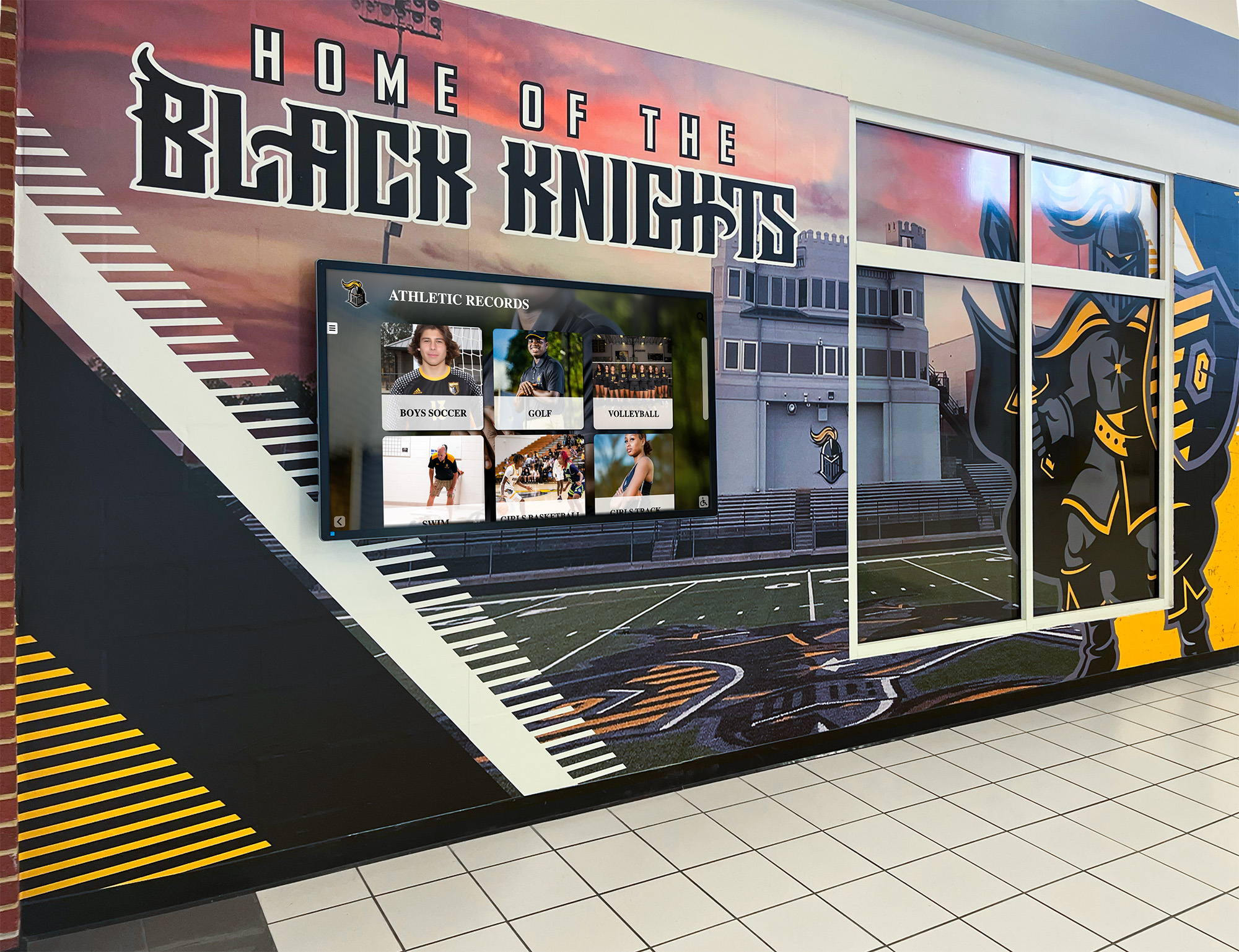
Day-in-the-Life Content: Detailed narratives or video content following professionals through typical workdays showing what they actually do hour-by-hour. Day-in-the-life content helps students understand career realities beyond idealized descriptions while revealing whether daily activities align with their interests.
Industry Partner Connections: Information about local and regional employers in various industries, including direct connections to company career pages, internship programs, and apprenticeship opportunities. Local employer connections help students understand career opportunities within their communities while potentially reducing brain drain by showcasing viable local pathways.
Required Credentials and Certification Information: Details about industry certifications, professional licenses, and credentials many careers require beyond basic education. Information about certification pathways helps students understand complete requirements while identifying credential opportunities they might pursue during high school through career and technical education programs.
Integration with Academic Programs and Course Planning
Career pathways boards create maximum value when connected to students’ ongoing academic experiences rather than existing as separate career exploration islands.
Academic Integration Approaches:
Course Connection Mapping: Clear documentation showing which high school courses support different career pathways. Students exploring healthcare careers should see that biology, chemistry, and anatomy courses directly support their interests. Engineering-interested students need to understand how mathematics and physics courses create foundations for future success. Course connections help students make informed elective decisions while increasing motivation by connecting current coursework to future goals.
Career and Technical Education Program Alignment: Explicit connections between CTE programs and related career pathways. Students interested in business careers should see how business education courses, DECA participation, or entrepreneurship programs support their goals. Technology-interested students need clear pathways showing how computer science courses, robotics programs, or information technology certifications connect to careers they’re exploring.
Advanced Placement and Honors Course Guidance: Information about which AP courses, honors classes, or dual enrollment opportunities provide advantages for different career paths. Pre-medical students benefit from understanding which AP sciences colleges value most. Engineering pathways might emphasize AP Calculus and AP Physics importance. Transparent guidance helps students invest effort strategically in courses most valuable for their intended directions.
Extracurricular Activity Connections: Links between extracurricular programs and career pathway development. Career pathways boards should highlight how activities like debate team, robotics club, theater productions, student government, or athletic participation develop skills relevant to different careers while providing resume-building experiences colleges and employers value.
College and University Program Information: Details about specific college majors and programs that prepare students for different careers. Information might include recommended schools with strong programs in various fields, admission requirements and competitiveness, program structures and timelines, and connections between college majors and career outcomes. College planning integration helps students see complete educational pathways rather than stopping at high school graduation.
Implementing Interactive Career Pathways Boards Successfully
Schools ready to implement interactive career pathways boards should follow systematic approaches ensuring effective deployment, sustained use, and continuous improvement over time.
Needs Assessment and Goal Definition
Begin implementation by thoroughly understanding current career guidance situations, identifying gaps, and establishing clear goals for what career pathways boards should accomplish.
Assessment Areas:
Current Career Guidance Inventory: Document existing career guidance resources, programs, and support including counselor availability and caseloads, career exploration curriculum, work-based learning programs, assessment tools, information resources, and technology currently used. Comprehensive inventory reveals what’s working that should be preserved and gaps that interactive boards must address.

Stakeholder Input Collection: Gather perspectives from multiple constituencies including students about career exploration needs and preferences, guidance counselors about resource gaps and desired capabilities, teachers regarding academic integration opportunities, parents concerning career readiness concerns, and community employers about workforce needs and skill gaps. Broad input ensures solutions address real needs rather than implementing technology for technology’s sake.
Success Metric Definition: Establish clear measurable goals for career pathways board implementation. Goals might include specific percentages of students engaging with career exploration resources, increased numbers of students completing career interest assessments, higher participation in work-based learning programs, improved college application completion rates, better alignment between student course selections and stated career interests, or enhanced satisfaction with career guidance among students and families. Defined metrics enable later assessment of whether implementations achieved intended purposes.
Budget and Resource Planning: Determine available budget for initial implementation and ongoing operations. Understand staff time availability for content management and maintenance. Identify potential funding sources including general operating budgets, grant opportunities, business partnerships, or parent organization support. Realistic resource planning prevents implementations from stalling due to unanticipated costs or staffing limitations.
Technology Platform Selection and Procurement
Career pathways board success depends significantly on selecting appropriate technology platforms matching school needs, technical capabilities, and budget constraints.
Platform Selection Considerations:
Content Management Ease: Evaluate how easily school staff can update career information, add new content, modify existing entries, and maintain accuracy without requiring technical expertise. User-friendly content management systems enable sustainable operations where busy counselors and administrators can maintain currency without depending on IT staff for every minor update.
Customization Capabilities: Assess how completely platforms can be customized to reflect school-specific factors like local career opportunities, regional industries, school course offerings, available CTE programs, and community employer partnerships. Generic content provides starting points, but customization creates relevance connecting career exploration to students’ actual contexts.
Integration Options: Examine whether platforms integrate with existing school systems like student information databases, course catalogs, college planning software, or career assessment tools schools already use. Integration prevents duplicate data entry while enabling sophisticated functionality like showing course recommendations based on career interests or connecting student assessment results to personalized career suggestions.
Mobile and Web Access: Determine whether career information remains accessible only through physical displays or extends to mobile apps and web platforms students can access from anywhere. Extended access dramatically increases engagement by enabling exploration beyond school hours and allowing parents to participate in students’ career planning processes.
Analytics and Reporting: Evaluate what data platforms provide about system usage, most-viewed careers, assessment completion rates, and student engagement patterns. Robust analytics inform continuous improvement while demonstrating program value to administrators and stakeholders. Understanding digital asset management for educational institutions helps schools implement technology solutions efficiently while maintaining content quality.
Vendor Support and Training: Consider what implementation support, staff training, technical assistance, and ongoing customer service vendors provide. Strong vendor partnerships prove essential for successful deployments, particularly for schools without extensive technical resources. Solutions like Rocket Alumni Solutions offer comprehensive support designed specifically for educational environments, helping schools implement sophisticated systems successfully.

Content Development and Curation
Technology platforms provide infrastructure, but content quality determines whether career pathways boards genuinely help students or become underutilized displays with minimal impact.
Content Development Strategies:
Career Information Sourcing: Identify authoritative content sources for career information including U.S. Bureau of Labor Statistics Occupational Outlook Handbook, professional association career resources, industry-specific career information, state workforce development data, and vetted commercial career information databases. Multiple sources ensure comprehensive coverage while maintaining accuracy and currency.
Local Content Creation: Develop school and community-specific content including profiles of local employers and career opportunities, alumni working in various careers, regional industry information, community college and university program details, local internship and job shadowing opportunities, and area-specific labor market data. Local content creates relevance while showing students career opportunities within their communities.
Multimedia Content Production: Create or source video content including professional interviews, workplace tours, career day recordings, alumni testimonials, and student project showcases related to career exploration. Schools might partner with video production classes to create content as authentic student work, building media skills while developing career pathway resources.
Regular Content Review and Updates: Establish processes for periodic content review ensuring information accuracy, currency, and relevance. Assign specific staff responsibility for content maintenance with documented schedules for systematic review. Regular updates prevent information from becoming outdated while maintaining student and staff confidence in resource reliability.
Student Voice Integration: Include student-created content when appropriate such as career research projects, internship reflection videos, job shadowing reports, or interviews students conduct with professionals. Student voices resonate authentically with peers while creating ownership and engagement. Career exploration classes or advisory programs provide natural contexts for student content development.
Strategic Display Placement and Promotion
Even excellent career pathways boards create minimal impact if poorly located or unknown to students who would benefit from using them.
Placement Considerations:
High-Traffic Location Selection: Install career pathways displays in areas where students naturally congregate or pass frequently such as main lobbies, cafeteria entrances, guidance office waiting areas, library commons spaces, or main hallways. High-visibility locations increase spontaneous engagement while normalizing career exploration as routine part of school experience.
Guidance Office Integration: Ensure at least one display resides in or adjacent to guidance offices where students are already seeking support. Proximate placement enables counselors to direct students to specific resources during conversations while allowing waiting students to explore productively.
Multiple Access Points: Consider installing several displays in different locations rather than single installations. Multiple access points prevent overcrowding, increase overall visibility, reach students who frequent different school areas, and signal institutional commitment to career readiness by making it visible throughout buildings.
Viewing Comfort and Accessibility: Install displays at appropriate heights for comfortable interaction. Ensure adequate space for multiple simultaneous users without hallway congestion. Consider accessibility requirements for students with disabilities. Comfortable, accessible installations encourage extended engagement rather than brief unsatisfying interactions.
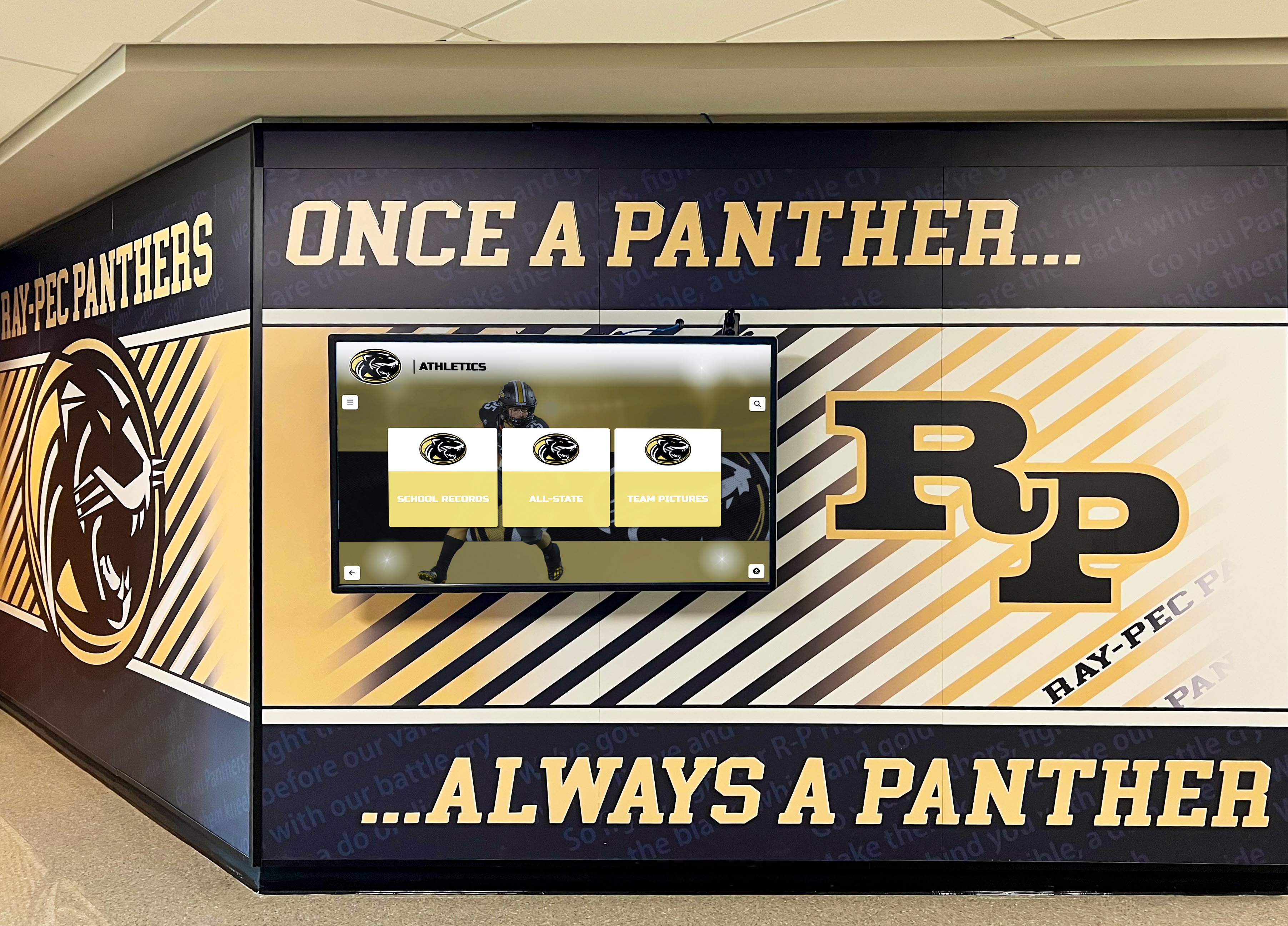
Launch Promotion Campaign: Implement comprehensive promotion when launching career pathways boards including school assemblies introducing resources, classroom demonstrations during advisory periods, parent communications explaining system capabilities, social media campaigns showcasing features, and counselor promotion during individual meetings. Thorough launch promotion builds awareness and initial usage momentum.
Ongoing Visibility Maintenance: Sustain awareness beyond launch through regular promotion including featured career spotlights, monthly showcase of new content, integration into career exploration curriculum, references in graduation planning communications, and periodic social media reminders. Sustained promotion prevents excellent resources from becoming invisible despite availability.
Training and Professional Development
Staff capability to leverage career pathways boards effectively determines whether sophisticated technology translates into improved student support or becomes underutilized equipment.
Training Components:
Counselor Comprehensive Training: Provide thorough training for guidance counselors covering system navigation, content organization, assessment tools and interpretation, how to guide students through exploration, integration with individual counseling, and content management procedures. Counselors serve as primary users who must understand all system capabilities to maximize student benefit.
Teacher Awareness Training: Offer orientation for teachers explaining career pathways board purposes, capabilities, locations, and how teachers might integrate resources into advisory programs, career exploration units, or course selection guidance. Teacher awareness multiplies impact by enabling more adults to direct students toward valuable resources.
Administrative Briefings: Ensure administrators understand career pathways board goals, implementation details, expected outcomes, and how systems support broader college and career readiness initiatives. Administrative understanding maintains support while enabling leaders to promote resources with students, families, and community stakeholders.
Ongoing Professional Learning: Provide periodic refresher training, advanced features workshops, and best practice sharing as staff develop experience using systems. Ongoing professional learning ensures sustained effective use while adapting to system updates or enhanced features vendors release over time.
Measuring Career Pathways Board Impact and Effectiveness
Schools investing in interactive career pathways boards must demonstrate value through systematic assessment measuring whether implementations achieve intended student development outcomes.
Quantitative Usage Metrics
Digital platforms provide detailed usage data offering objective measures of engagement and interaction patterns.
Key Usage Indicators:
Overall System Interactions: Track total number of user sessions, unique users, and interaction frequency over time. Usage trends reveal whether systems attract sustained engagement or initial interest fades after launch novelty dissipates. Growth in usage suggests increasing value recognition while declining patterns signal need for intervention to rebuild engagement.
Career Exploration Patterns: Monitor which career pathways receive most attention, what information students access most frequently, and how exploration patterns vary across grade levels or demographic groups. Pattern analysis informs content development priorities while revealing student interest trends that might inform program planning in areas like CTE course offerings or elective development.
Assessment Completion Rates: Track how many students complete interest inventories, skills assessments, or values clarification exercises available through systems. Assessment completion indicates depth of engagement beyond casual browsing while providing valuable self-discovery data that counselors can reference during individual planning conversations.
Duration and Depth Metrics: Measure average session length and pages viewed per interaction. Longer, deeper engagement suggests genuine exploration and learning while brief superficial interactions may indicate usability problems, content gaps, or insufficient integration into guidance processes that would encourage substantive use.
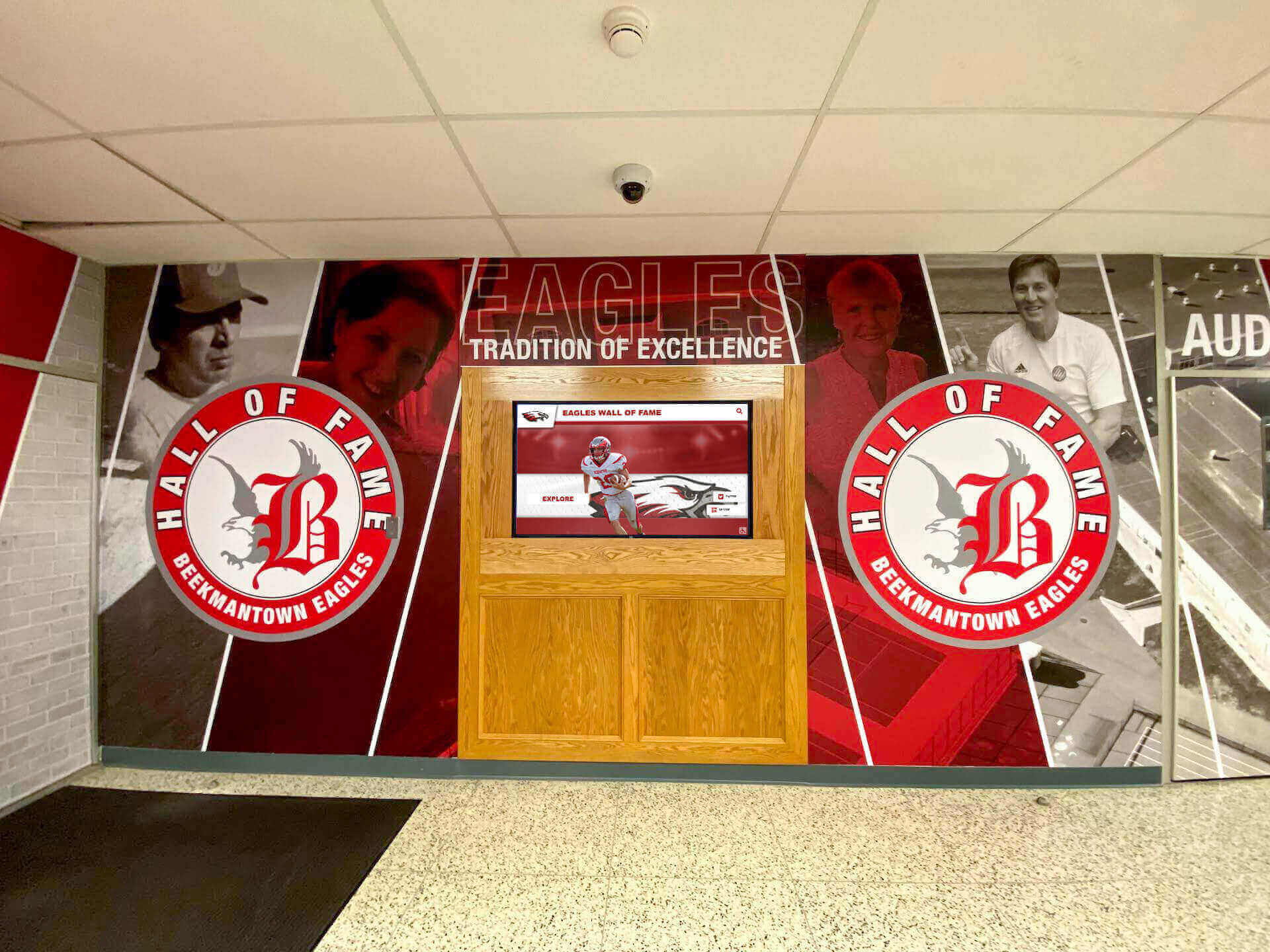
Mobile and Remote Access: For systems offering web or mobile access, track usage occurring outside school hours or off campus. Extended access patterns demonstrate that resources provide sufficient value students choose to engage beyond required school time, suggesting genuine usefulness rather than compliance-driven interactions.
Qualitative Outcomes Assessment
Numbers reveal usage but qualitative assessment determines whether career exploration translates into improved student outcomes.
Outcome Measurement Approaches:
Student Surveys and Feedback: Collect systematic student feedback about career pathways board usefulness, ease of use, content quality, and influence on planning decisions. Ask whether resources helped clarify career interests, improved understanding of educational requirements, influenced course selections, or increased confidence about post-secondary plans. Direct student perspectives reveal whether implementations achieve intended purposes.
College and Career Readiness Indicators: Monitor outcome metrics potentially influenced by improved career guidance including percentages of students with declared career interests, completed career interest assessments, work-based learning participation, career-focused course enrollments, and post-secondary application completion rates. While many factors influence these indicators, improvements suggest career pathways boards contribute to stronger overall career readiness.
Counselor Observations: Gather counselor perspectives about whether career pathways boards enhance their effectiveness, enable them to support more students, improve quality of career conversations, reduce repetitive questions, and strengthen students’ career planning sophistication. Counselor insights reveal whether technology amplifies professional effectiveness as intended.
Parent and Family Feedback: Collect family perspectives through surveys or focus groups about whether they perceive improved career guidance, feel better informed about options and pathways, notice increased student engagement with career planning, and view schools as adequately preparing students for post-secondary transitions. Family perceptions matter significantly for overall satisfaction with educational experiences.
Post-Graduate Tracking: For schools conducting alumni surveys, examine whether graduates report adequate career preparation, alignment between high school planning and post-secondary experiences, and satisfaction with career guidance received. Long-term alumni perspectives provide ultimate assessment of career guidance program effectiveness.
Advanced Features and Future Directions
As interactive career pathways boards mature, advanced capabilities continue emerging that enhance effectiveness while addressing limitations of initial implementations.
Artificial Intelligence and Personalization
AI capabilities enable increasingly sophisticated personalization, adapting content and recommendations based on individual student characteristics, responses, and behavior patterns.
AI Applications:
Intelligent Career Recommendations: Machine learning algorithms analyzing student assessment responses, academic performance, course selections, extracurricular involvement, and exploration behavior to suggest careers students might not have discovered through traditional browsing. AI recommendations expand horizons while efficiently directing students toward options worth investigating.
Adaptive Content Presentation: Systems that modify information depth, vocabulary complexity, and presentation format based on individual student comprehension levels and engagement patterns. Adaptive presentation ensures accessibility for diverse learners while preventing information overload that causes students to disengage.
Predictive Analytics: Analysis identifying students at risk of graduating without clear career direction based on engagement patterns, enabling proactive counselor intervention. Predictive insights allow staff to target support toward students most needing assistance rather than waiting for students to seek help independently.
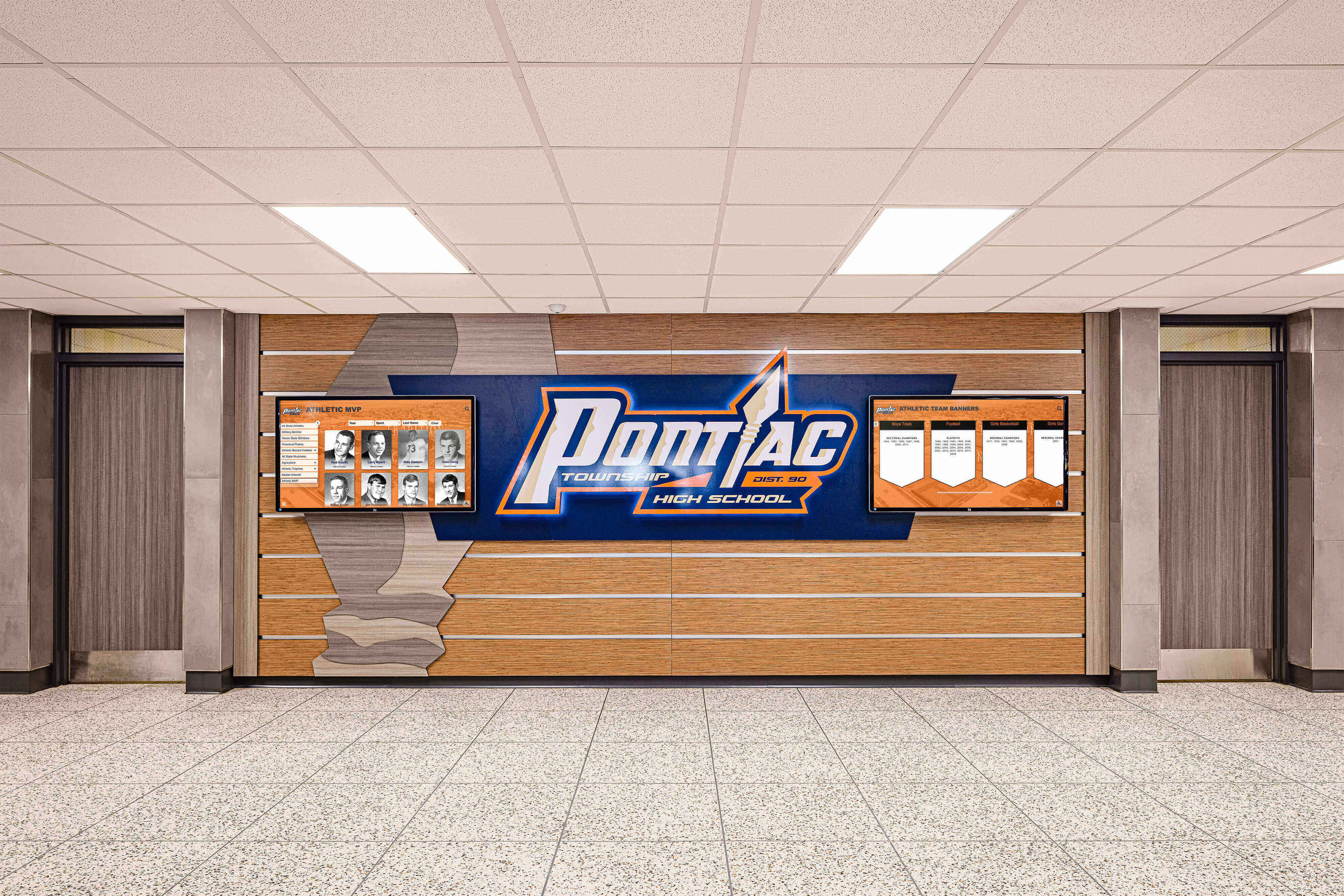
Integration with Portfolio and Planning Systems
Career pathways boards create greater value when integrated with comprehensive student portfolio and planning platforms tracking complete high school experiences.
Integration Opportunities:
Digital Portfolio Connections: Links between career exploration and digital portfolios where students document projects, achievements, and experiences relevant to career interests. Portfolio integration helps students see how their high school accomplishments connect to career pathways while creating evidence of skill development employers and colleges value.
Four-Year Planning Tools: Incorporation of career interests into academic planning systems that map complete high school course sequences aligned with career goals. Integration ensures career exploration influences actual course selection decisions rather than remaining abstract exercise disconnected from daily educational experience.
Post-Secondary Application Integration: Connections enabling career exploration data to inform college application processes including suggested college majors, recommended schools with strong programs in fields of interest, and alignment between career goals and college selection decisions. Seamless integration prevents students from conducting career exploration separately from college planning when the processes should inform each other.
Virtual and Augmented Reality Experiences
Emerging technologies enable immersive career exploration experiences that go beyond video and text to place students virtually in professional environments.
Immersive Technology Applications:
Virtual Workplace Experiences: VR environments allowing students to explore realistic simulations of various workplaces, observing professionals at work and experiencing career contexts first-hand. Virtual experiences make abstract careers tangible while enabling exploration of environments students might not otherwise access like surgical suites, engineering facilities, or corporate offices.
Skill Development Simulations: Interactive simulations allowing students to attempt simplified versions of professional tasks, experiencing what different types of work involve while developing preliminary skills. Simulation experiences help students assess interest and aptitude more accurately than passive information consumption allows.
Augmented Reality Campus Integration: AR applications overlaying career information onto physical school environments, perhaps highlighting which classrooms teach courses relevant to careers students are exploring or showing career pathway connections on corridor displays as students pass by. AR integration brings career information into daily experience rather than confining it to dedicated displays. Understanding future trends in digital recognition and information systems helps schools plan strategic technology investments aligned with emerging capabilities.
Conclusion: Empowering Student Futures Through Interactive Career Pathways
Interactive career pathways boards represent transformative tools that fundamentally improve how schools support student career exploration, college readiness, and post-secondary planning. By providing comprehensive career information, engaging interactive experiences, continuously updated content, personalized exploration pathways, and efficient resource management that amplifies counselor effectiveness, these digital solutions address critical gaps in traditional career guidance approaches that leave too many students graduating without clear direction or understanding of available opportunities.
The most successful career pathways board implementations demonstrate several key characteristics: comprehensive career content covering diverse pathways beyond traditional four-year college routes, engaging interactive features that hold student attention while encouraging deep exploration, thoughtful integration with academic programs connecting career interests to daily educational experiences, sustained promotion ensuring students and staff know resources exist and understand their value, and continuous improvement based on usage data and stakeholder feedback ensuring systems remain relevant and useful over time.
Schools that invest strategically in interactive career pathways boards reap substantial benefits extending far beyond compliance with career guidance requirements. These benefits include improved student engagement with career planning, better-informed course selection decisions aligning with career interests, increased participation in work-based learning and career exploration programs, more successful post-secondary transitions as students enter college or careers with clearer direction, enhanced counselor effectiveness enabling support for more students with existing staff resources, and stronger school reputations as institutions genuinely preparing students for successful futures.
Every student deserves clear pathways connecting education to meaningful careers. Traditional approaches that worked in previous generations increasingly fall short in rapidly evolving economic landscapes where career success requires earlier planning and more intentional skill development. Interactive career pathways boards provide modern solutions matching contemporary student needs while honoring the fundamental purpose of education—preparing young people for fulfilling, productive lives beyond graduation.
Ready to transform career guidance at your school? Modern solutions like Rocket Alumni Solutions provide comprehensive interactive platforms specifically designed for educational environments, combining powerful technology with professional support that helps schools implement sophisticated career exploration systems successfully. Every student deserves clear vision of their potential future—interactive career pathways boards ensure that vision becomes reality.
